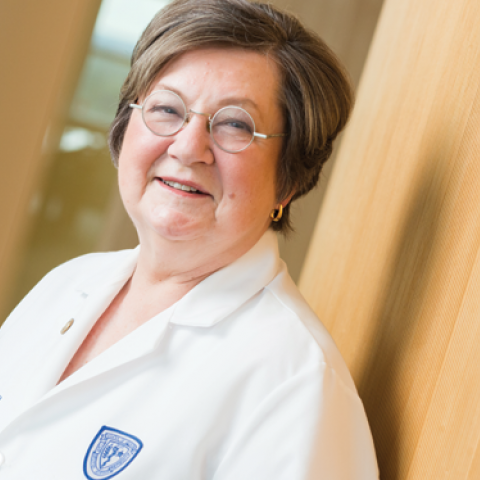The COVID-19 pandemic is moving fast and Ohio has responded with stiff measures to limit public interactions. We are hunkering down with our families and trying to sustain our critical research and education functions. For the most part, we have responded very well.
Our graduate education has, for the most part, smoothly transitioned to the remote mode. Though not all of us have the greatest home internet, and we have had a crash course in computer connections that are remote, we have persevered and are delivering education remotely as required. Our investigators are devising ways to sustain their critical research while minimizing contact among lab personnel. Our research enterprise under the direction of Mark Chance has responded to keep our animals going, our ability to submit grants intact, and our cores functional despite the need to enact social distancing. Congratulations on the work so far! And pray we do not need to advance to our next levels of planning.
I have nothing but awe for our medical education leaders who have created a remote curriculum for the preclinical phase and utilized technology to deliver an incredible educational experience online or remotely, starting today. Hats off to the curriculum development team, headed by Associate Dean for Curriculum Amy Wilson-Delfosse, and to our GARLA anatomy team and the Holoanatomy developers led by Sue Wish-Baratz and Mark Griswold, who obtained the additional lenses from Microsoft (with the loan of a few from the CCLCM – many thanks) and created a self-guided curriculum. They did this in record time with a minimum of muss and fuss. Amy, thank you!
We are grateful to Lisa Navacruz for modifying our CPCP curriculum to minimize patient contact and enter the telemedicine era. Our educational systems move forward despite the coronavirus crisis.
Today, we made the very difficult decision to suspend clinical clerkships until March 31. Our affiliated hospitals have been terrific in protecting our students, having them avoid patients who are febrile or have respiratory illness, and providing their usual fabulous educational experience. However, our students are still considered nonessential personnel – they add to the crowd at rounds and in the clinical service areas, and by simply being in the clinical setting, they are at higher risk for contracting COVID-19. Even if they themselves are asymptomatic, they can spread it in their community – roommates, family, grocery, drugstore. We can’t continue this avoidable risk. I am grateful for the consultation of all who weighed in, and the University Program and the Lerner College are acting as one.
This was a difficult decision for many reasons, not least of which is my conviction that physicians run toward areas of medical need, not away from them; we model this behavior and expect it from our students. I also am very impressed with how our hospitals have responded to the crisis, and have been glad for our students to have a front-row seat at this performance. I realize that the elimination of elective clinic and hospital visits may compromise the spectrum of disease observed, and therefore the educational experience, but there is great value in immersion in crisis response. Also, most of our students really want to help! We may yet come to the situation in which students, particularly the graduating students who are, as one student put it, “nearly interns ourselves,” become essential personnel for our health systems if the ranks of caregivers are decimated by virus infections. It is certainly true in Italy now. We hope that our rapid and firm action will avoid this worst-case scenario, but we do have students who have already volunteered to step up and help.
It is humbling for our sophisticated civilization to be laid low by a virus against which we have no defenses. In this modern era, where there is a pill for everything, this agent has no antidote at present. There may be drugs in development for other viruses that can be pulled from the shelf and fast-tracked into service, old-fashioned preps of immune serum may work as they did for Ebola; but for the more severely ill, for now, we depend on advanced ICU salvage methods. For some, though, even ECMO has failed to save them, and the supply of ICU beds may limit us as it does now in Italy. A vaccine is a year away, but some of our own scientists are working with CAR-T cells to kill off infected cells for the severely ill. Right on, Dr. Sekaly! But for right now, we have the old fashioned isolation and crowd control public health measures. Here is another message from the City of Cleveland Department of Public Welfare dated October 1918 in the midst of the Great Influenza. This message could have been written a few weeks ago. What’s old is new again.
So, thank you to all our dedicated faculty who have educated themselves about computer technology and remote learning, to the PIs who have reformulated lab operations to protect the essential core of their experiments, to the administrators who have planned to keep essential services operating at a safe social distance, to the educators of our professional students who have done yeoman service under pressure, and to our students who have rolled with all of this with some degree of grace and aplomb. I’m incredibly proud of all of us.
Thank you,
Pam


